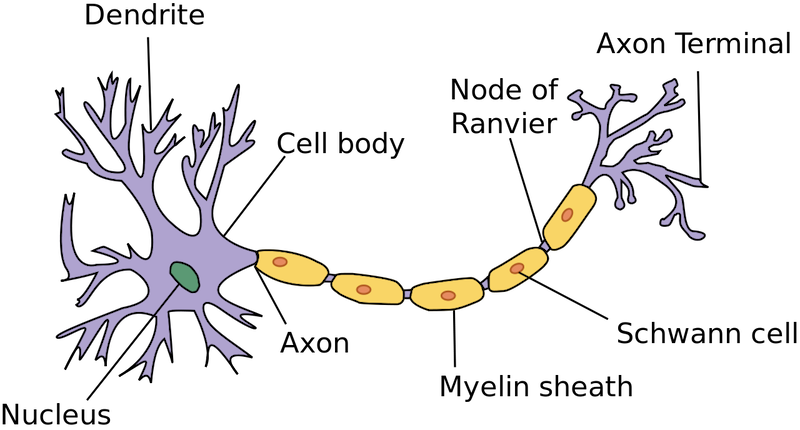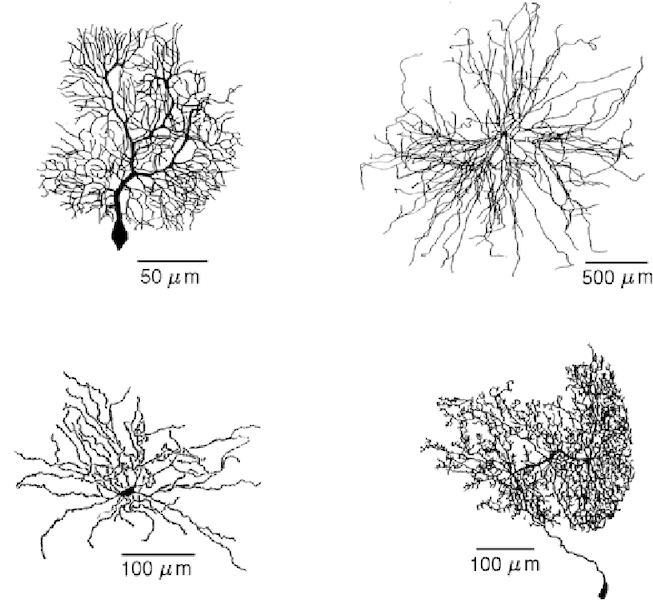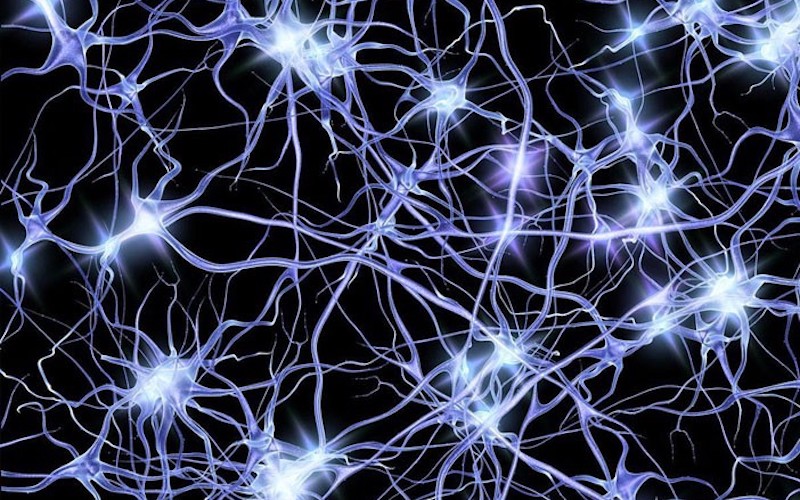What Is the Brain Made Of?
Episode #2 of the course Understanding your brain by Betsy Herbert
Welcome back!
Last lesson, we looked at the brain from afar, building up a mental picture of its various regions and components. Today, we’re asking: Just what are these components made of? What exactly are the units that make up this soft, spongy substance of the brain, and how do they operate?
The Neuron
The units of the brain are nerve cells, known as “neurons.” The brain is packed to the brim with these neurons—it houses roughly 100 billion in total, almost as many as stars in the galaxy. They’re just like any other cell in the body, but they have rather an unusual structure.
A typical neuron has a central spherical cell body, or soma, with two projections on either side, a bit like tree branches, known as the dendrites and axons. These projections link up to other neurons to form a huge, dense, interconnected network, along which information in the form of electrical signals can be sent.
The dendrites receive the signals, while the axons pass them on. Imagine a gigantic three-dimensional spider-web spanning your entire brain—or rather, a crowded netting of many overlapping spiderwebs. This will help you build up an idea of just how complicated the connections can be. In fact, each neuron makes an average of 10,000 connections with other neurons, making the total number of connections around 1,000 trillion. That’s a lot of information traveling around all at once! Once you understand this, you can begin to imagine how the brain achieves its phenomenal feats.

Neuron.
Different Types of Neurons
All neurons are not created equally. There are hundreds of different varieties of neurons specialized for different functions, and they come in all sorts of shapes and sizes.
Sensory neurons, for example, are specialized to respond to specific sensory modalities, such as light or sound; motor neurons, on the other hand, stimulate muscular contractions to initiate movement. Some neurons are unipolar, having no dendrites; others, like the Purkinje cells, have huge dendritic “trees” that branch thousands of times in a beautiful fan-like mesh.
Take a look at the microscope images below for examples of what neurons can look like:

Other Cell Types
Now, although neurons are the stars of the show, they’re not the only players in the brain’s stage; in fact, they are far outnumbered by another type of cell, called glial cells. These are non-excitable cells that don’t play a role in the transmission of information but have a vital function nonetheless: They form the structural support, scaffolding, nourishment, and maintenance necessary to keep the neurons functioning. Neuroscientists like to refer to them as the neurons’ “babysitters,” and they certainly wouldn’t survive without them. There are three main types: the astrocytes, oligodendrocytes, and microglia.
So, here’s our main takeaway: The cells of the brain are not uniform but come in all sorts of varieties, shapes, and sizes that allow different parts of the brain to be specialized for different functions. But although neurons can be wildly different, they all operate via the same basic mechanism—a mechanism that perhaps surprisingly, just boils down to the flow of electricity. That’s what we’ll explore tomorrow!
See you then!
Betsy
Recommended reading
Overview of Neuron Structure and Function
Share with friends

